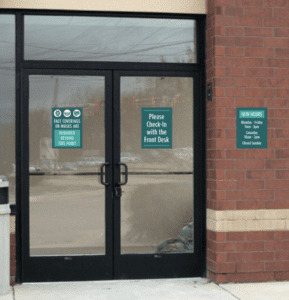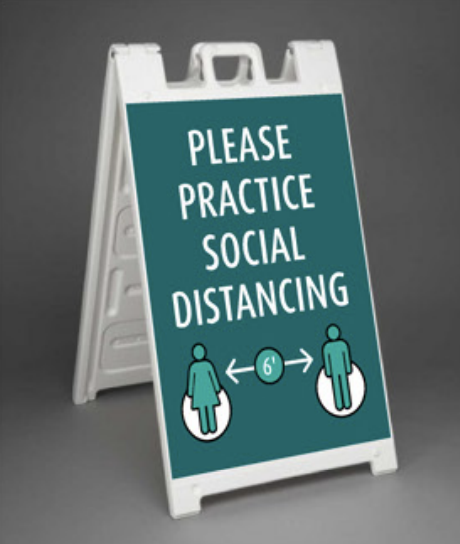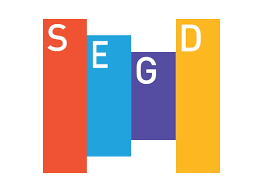Signage: Enhancing Environments in a Post-COVID World
ADA, Design/Build, Functional Signage, Interior Signage, Sign DesignWith vaccines readily available and the post-COVID landscape evolving, businesses will continue examining and creating policies to ensure the safety of their employees returning to in-person work — and the safety of customers and visitors, too.
In many cases, companies have also recognized the value of offering their employees a hybrid approach: working part-time virtually and part-time in person. This strategy makes sense for companies who’ve incorporated virtual meetings as a complement to in-person meetings with clients and visitors.
More than a year of remote work is challenging the way we view traditional work models. A Microsoft 2021 report found 73% respondents desiring flexible, hybrid work options after the pandemic ended, and 66% of businesses indicating a plan to redesign physical spaces to more effectively and safely support hybrid work.
As the pandemic ebbs, companies will keep evaluating and adjusting the best use of their spaces—whether to downsize or increase their footprint and how best to create workspaces supporting COVID safety protocols and in person working.
An important consideration to those plans? Well-designed signage. Not only can it help keep everyone safe, it also enhances workplace environments and supports company messaging.
Best Practices for COVID Signage Communication
Signage design continues to evolve in response to the pandemic. Just like any other signage package, it starts with a message master plan to determine the branding, graphics, and copy that will help employees, visitors, and clients feel comfortable and welcome as well as communicating new safety protocols.
Well-crafted message master plans define and communicate important information effectively. These master plans also take into consideration frequently asked questions, set the tone for the entire company, provide suggestions for blending new signage with existing workplace branding and sign systems.
Signage plans should offer guidance on safe experiences and use in:
- Common areas
- Conference rooms
- Elevators, stairs, and hallways
- Entryways and reception areas
- Pantry/break areas
- Restrooms
- Workstations
Signage for Safety Inside and Out
 Whether it’s creative illustrations or clever phrasing, part of signs’ power lies in their ability to create positive experiences and make it easier for customers and employees to navigate spaces. For wayfinding in a post-COVID-19 world, signage experts recommend the following best practices:
Whether it’s creative illustrations or clever phrasing, part of signs’ power lies in their ability to create positive experiences and make it easier for customers and employees to navigate spaces. For wayfinding in a post-COVID-19 world, signage experts recommend the following best practices:
- Sign messages should opt for a more friendly—and less alarming—approach. Off-the-shelf sign designs often feature color palettes or typography that feel harsh and unwelcoming. Choose instead custom signs incorporating the company branding, colors, and messaging tone.
- Differentiate these signs from other advertising, regulatory messaging, or wayfinding signs.
- Organizations that have reimagined their spaces should post signs reminding employees of each repurposed area’s new use.
- Opt for simplicity in design, including only relevant, important graphic information (three or four pieces at most) per sign.
- Create a library of standardized icons used throughout the space and keep sign designs and features consistent, placing related signs at key points along employees’ typical daily routes.
Regardless of the type of signage, its presence isn’t enough to improve corporate communication. But it can—when used appropriately—help transform workplaces and improve how employees work.
Surveys suggest that returning to the office will present challenges for both employees and the organizations for whom they work, and that many office workers expect a hybrid arrangement allowing them to work remotely and in person each week.
Internal signage—whether digital or static—will help businesses communicate their internal messaging, promote safety protocols, and cultivate a comfortable work environment for everyone.

